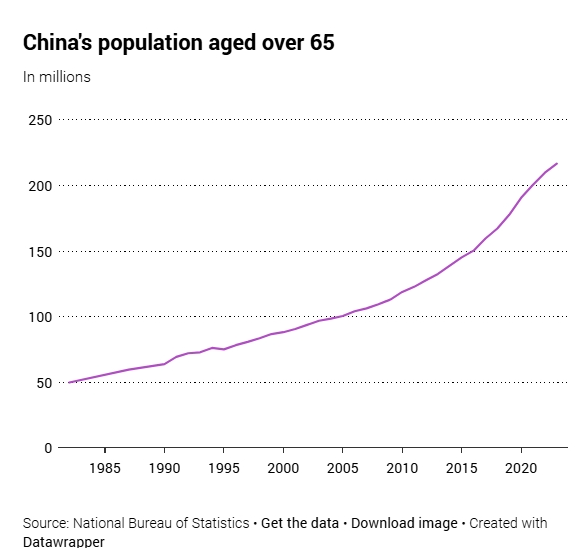China should focus on childbirth support and lower the cost of raising children as it grapples with demographic issues that have not been seen elsewhere in the world, a Communist Party newspaper urged on Tuesday.
Supporting families with children, including putting more government resources into preschool education, should be prioritised in efforts to deal with a population that is shrinking and rapidly ageing, according to the Study Times, a publication under the Central Party School.
The call came amid authorities’ vow to build a “childbirth-friendly society” to encourage births as the country’s total population started declining two years ago and the birth rate fell to an all-time low of 6.39 for every 1,000 people last year.
“Various types of costs paid by families and individuals are the main factors impeding the desire to have children,” the newspaper said in an opinion piece by Du Yang, head of the Institute of Population and Labour Economics under the Chinese Academy of Social Sciences.
It pointed to the substantial gap between China and developed countries in public spending on preschool education, while stressing its significance to improving population quality – a vision that President Xi Jinping has reiterated.
It also called for optimising and expanding vocational education, which will help equip China’s workforce with the skills needed to drive productivity and sustain economic growth.
The world’s second-largest economy is facing unique demographic challenges that lack direct international comparisons, Du emphasised in the article.
Unlike many developed nations that aged gradually, China’s population is doing so while its economy remains in a transitionary phase.
By 2023, 15.4 per cent of China’s population was aged 65 or older – a figure that is expected to rise sharply by 2050.
Compounding this challenge is the phenomenon of “growing old before getting rich”, with China’s per capita GDP lagging behind advanced economies at similar stages of ageing.
Additionally, “the decline of the total population is a major change in China’s basic development conditions, and it is a situation that has never been encountered when China made plans in the past”, Du said.
The Chinese population declined by roughly 850,000 in 2022, marking the first decline since 1961. Last year, the downward trend continued, falling by 2.08 million to 1.4097 billion, according to official data.
With the population and labour force simultaneously shrinking, Du also warned of declining consumption and investment demand.
These shifts require China to adapt its economic growth model, moving away from factor-driven growth and improving total factor productivity, he said.

